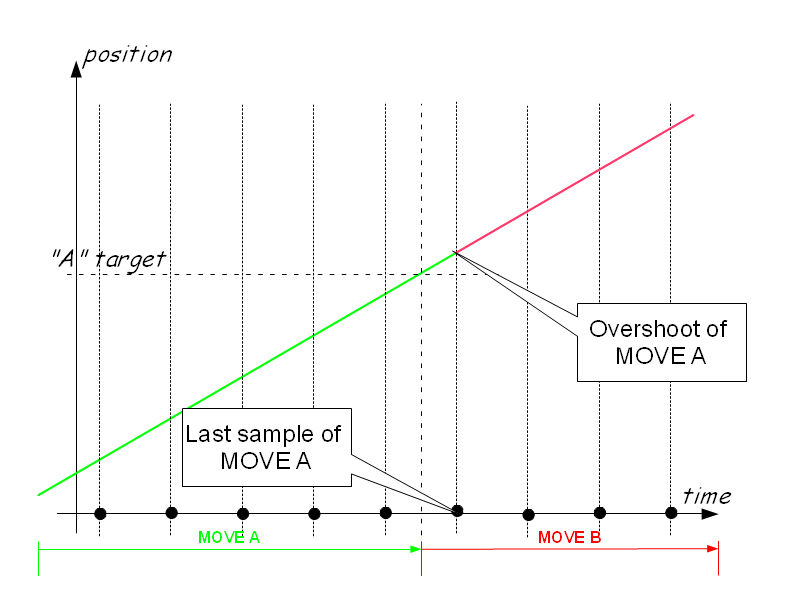Concatenation of Movements
Contents
Concatenation of movements
In aico.control system two motions can be "glued" together using a non-zero final velocity value. This method is called concatenation. It is a primitive way of blending. Each motion is fully executed according to its interpolation specification in opposite to blending(CP,SP or AI) where the path is modified in order to fit to the motion constrains.
How the concatenation is issued?
Depending if the given motion element is group/axis or robot the following final-velocity properties are used:
- In case of group/axis: VFINAL (comes together with VCRUISE).
- In case of robot : VFTRAN and VFROT (comes together with VTRAN and VROT).
Some special issues that need to be taken into account
Profiling
- It is important to note that when specifying final velocity that the actual final velocity can differ. The system motion profiler tries to generate the best (fastest) motion profile under the given limitations. The actual obtained final velocity will depend on initial velocity of the movement, movement length and all the motion limitations (acceleration/deceleration max, jerk max, etc.).
- In case a series of conncatenedted motions is is issued and the last one starts with such a high velocity that the movement can not be stopped at the end an AUTOMATIC BRAKING error will be sent to the user.
- In case the final velocity is too high the biggest achievable final velocity will be reached instead.
